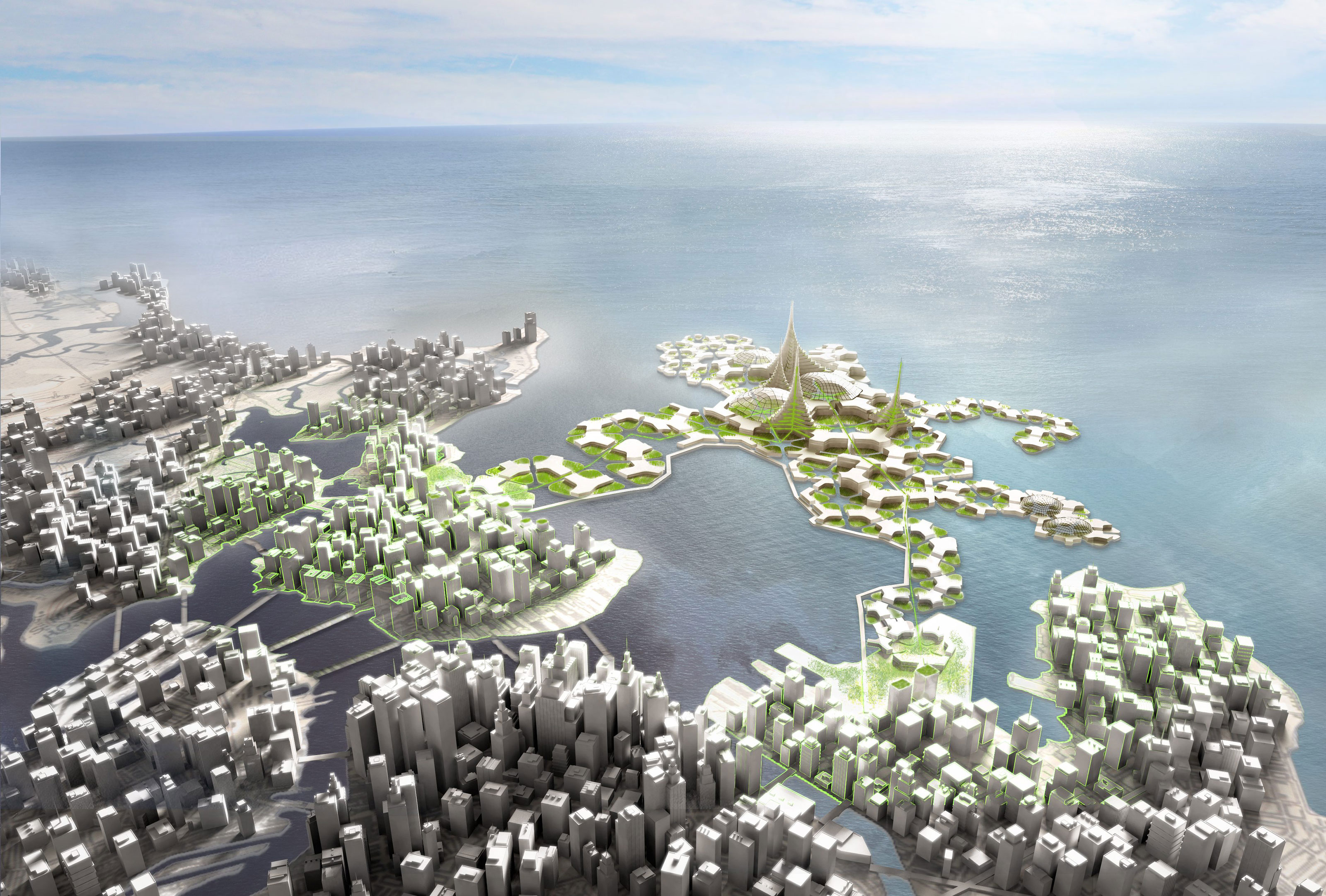
Ocean Programs
Shimizu Corporation is the Only Japanese Company Taking Part in “Floating Future,” a Research Project into Floating City Solutions Underway in the Netherlands
Shimizu Corporation has previously won praise from around the world for the high-quality conceptual design of GREEN FLOAT, a vision of a future floating city unveiled to the public in 2008. In January 2024, Shimizu Corporation harnessed the experience and knowledge developed through the GREEN FLOAT project to become the first Asian company to join the Floating Future consortium, a group of companies researching floating solutions designed to alleviate the difficulties the Netherlands is likely to face in securing adequate land for its future population as sea levels rise. By participating in this project, Shimizu Corporation aims not only to contribute to the solution of this issue, but also to gain further knowledge and technical skills through its work on the project, allowing the company to leverage that expertise in new projects in Japan and overseas.
Researching “Floating Future,” an Upscaling of Floating Structure Project

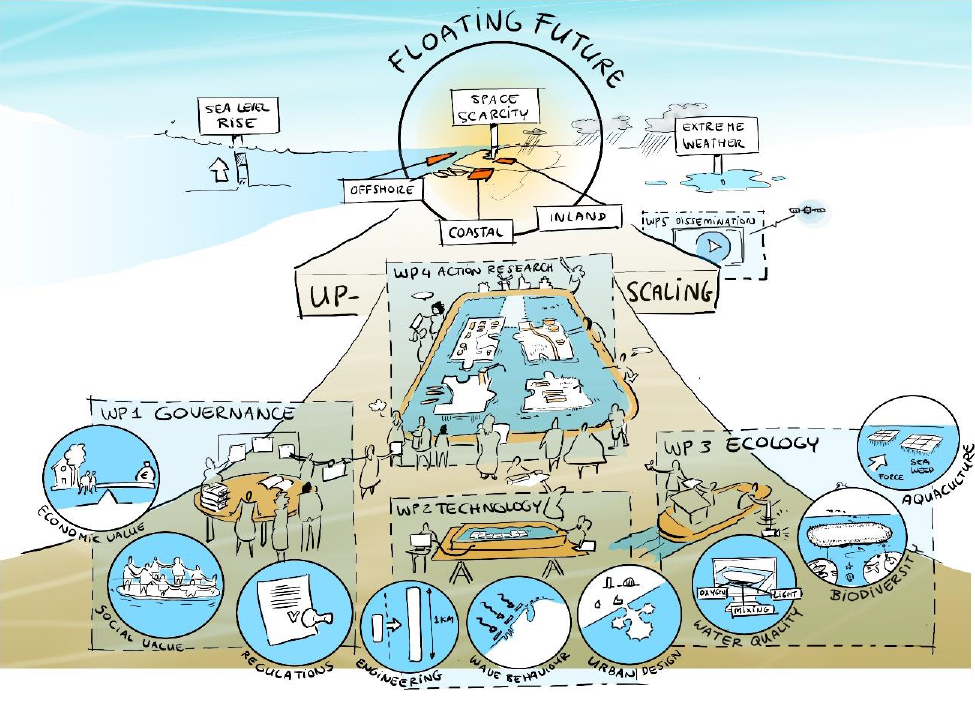
The Floating Future research project into the floating cities of the future is led by the Maritime Research Institute Netherlands (MARIN), a world-leading marine research institute, and funded by the Dutch Research Council (NWO). As the Netherlands faces potential future land shortages due to climate change and growing population density, the project seeks to solve these problems through the development of large-scale floating structure. The project is supported by many parties that share the project goals including Delft University of Technology (TU Delft) and other universities, research institutions including the Royal Netherlands Institute for Sea Research (NIOZ), Deltares, and the Blue Revolution Foundation, government organizations including the Dutch Ministry of Infrastructure and Water Management, local authorities including the municipal governments of Amsterdam and Rotterdam, and also companies, including startups, which are developing relevant technology. Other participants in the project include major legal firms and other organizations with the necessary legal expertise. Together, the participants aim to research realistic, comprehensive answers to the question of floating cities, going beyond the simple provision of technology. With its goal of achieving feasible large scale floating structure, the project, which began in January 2024, is scheduled to run until December 2028.
The Netherlands already has experience in internationally-renowned large-scale Floating structure projects including the construction of IJburg, a residential neighborhood currently being built on artificial islands, and Space@Sea, an experimental project examining the feasibility of using modular, floating islands in the North Sea for applications including an energy hub.
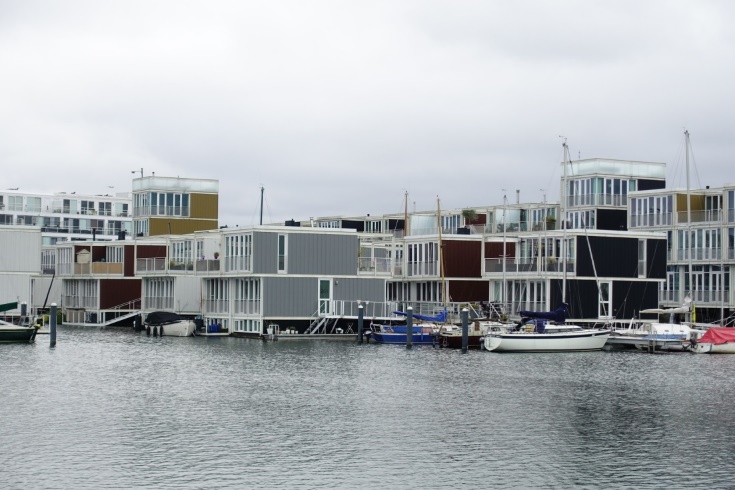
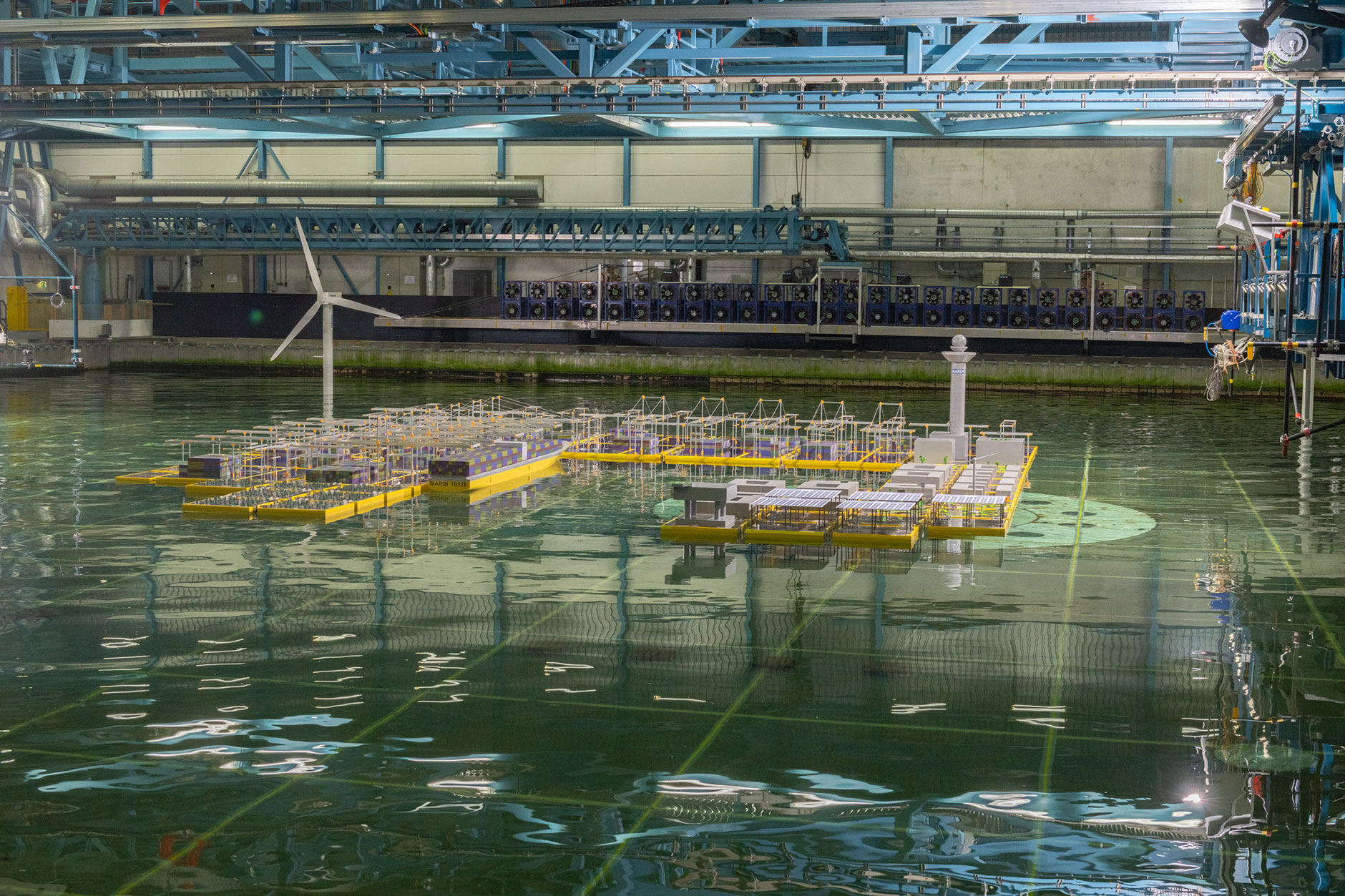
Creating the Floating Structure of the Future
GREEN FLOAT, a vision for an environmental city of the future, was first made public by Shimizu Corporation in 2008. In 2017, GREEN FLOAT II, a follow up project, received AiP accreditation (a key design accreditation issued by ClassNK, a non-governmental ship classification society). In 2023, Shimizu Corporation further expanded its knowledge of floating structure technology through practical studies on Universal Block Floating System.
Through its participation in “Floating Future,” Shimizu Corporation is committed to working together with private-sector companies, governmental organizations and academic institutions in the Netherlands to contribute to the development of large-scale floating structure technology. Shimizu Corporation hopes to harness the technology and knowledge gained through the project to further develop floating structure technology and build a market for floating urban solutions, playing a role in designing and developing the floating cities of the future in Japan and around the world.
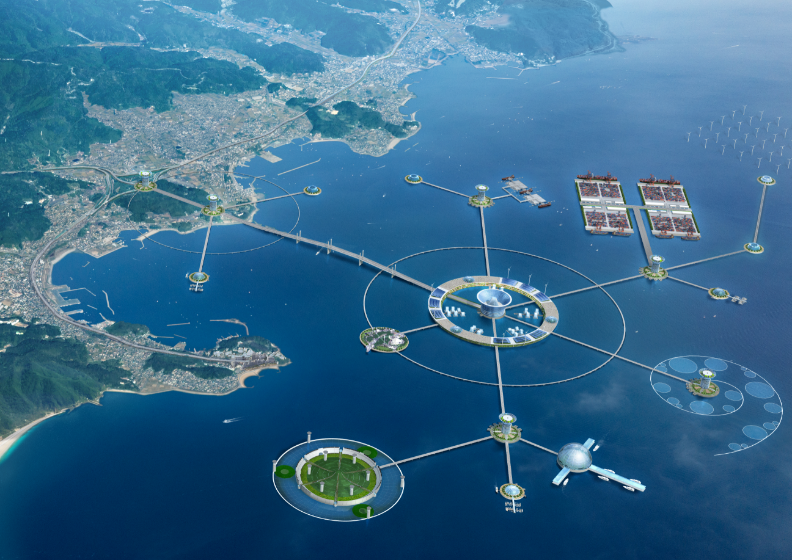
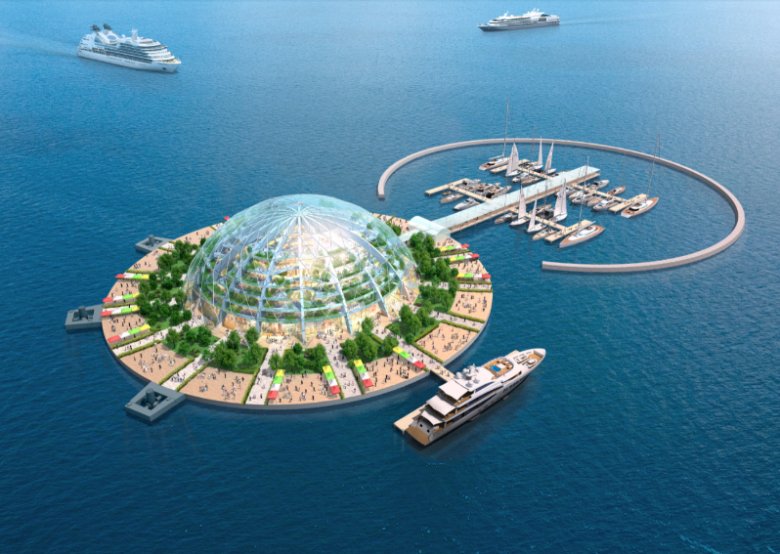
Shimizu Corporation’s vision for sustainable floating cities
The information posted here is the current information on February 4, 2023.
Please be aware that this information may have changed by the time you view it.


